Los colores marcan nuestro estado de ánimo. No es algo comprobado científicamente pero si nos paramos a pensarlo, elegimos cuidadosamente los colores de nuestra ropa y de la decoración del hogar por lo que denominamos “nuestro gusto”, es decir, porque nos influyen directamente. Si nos centramos en el mundo de la moda, el color de las prendas es seguramente lo primero que determina su compra.
Si de verdad nos fijamos tanto en los colores, ¿hablamos hoy de tintes y sus tipos?
Las prendas que vestimos diariamente están coloreadas con tintes químicos. Son fáciles, rápidos y capaces de ser producidos en grandes cantidades para la gran industria textil mundial. Derivados la mayoría de ellos del petróleo y procesados en laboratorio, su fácil aplicación y su durabilidad han hecho que se impongan a los tintes naturales. En futuros post hablaré de las clases de tintes que usa la industria, pero hoy, siguiendo un poco la línea de consumo más eco y sostenible de mis últimos post, me centraré en los tintes naturales.
Los tintes naturales se elaboran a partir de plantas, verduras o frutas, insectos y algunos minerales. Sólo se podrán usar con fibras naturales, ya sean las fibras que provienen de las plantas o la celulosa, como el algodón, el lino, el ramio o el rayón, o las fibras animales, como la lana, la angora, el mohair, el cachemir, la seda o el cuero.
En los tintes naturales, cada sustancia genera un color específico. Por ejemplo:
- los amarillos los podemos conseguir con granadas, semillas de alfalfa, flores de caléndula, brezo, flores de diente de león, cúrcuma, pimentón, apio, narcisos o las flores de las dalias.
- los naranjas de las zanahorias, calabacines, azafrán u hojas de eucalipto.
- los rojos de la remolacha, hibiscos secos o palo de Brasil.
- los rosas de las peonías, raíces de remolacha, fresas, cerezas, frambuesas rojas, líquenes o pieles de aguacate.
- los violetas de la piel de berenjena, lavanda, uvas tintas o moras.
- los azules de los arándanos o del índigo.
- los verdes de las alcachofas, hojas de espinaca, flores de lilas o de la echinacea.
- los marrones de las corteza de roble, flores y hojas del hinojo, ramas de hiedra, piñas de pino y granos de café para marrones oscuros.
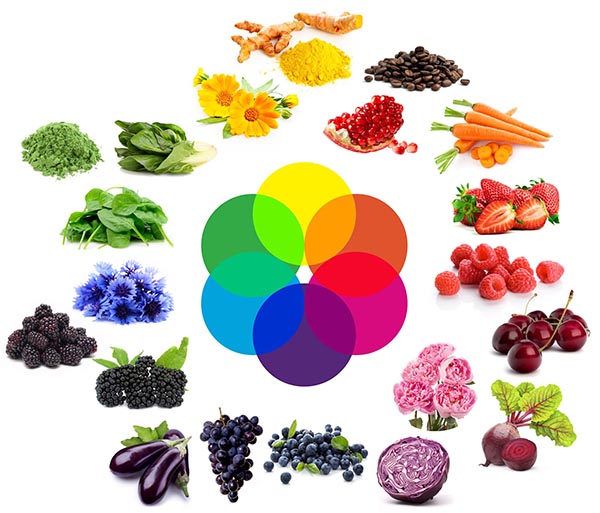 Si os animáis a probar a teñir tejido o alguna prenda con tintes naturales en casa, tened en cuenta que para obtener el color de la fruta o verdura, plantas o pétalos, tenéis que comenzar siempre por cortarlo en trozos pequeños, aplastarlos bien en un mortero o en el caso de las frutas exprimir sus jugos. Se mezclan con agua o alcohol y se ponen al calor para reducirlo. Después solo se ha de sumergir el tejido y dejarlo hervir entre varios minutos y una/dos horas.
Si os animáis a probar a teñir tejido o alguna prenda con tintes naturales en casa, tened en cuenta que para obtener el color de la fruta o verdura, plantas o pétalos, tenéis que comenzar siempre por cortarlo en trozos pequeños, aplastarlos bien en un mortero o en el caso de las frutas exprimir sus jugos. Se mezclan con agua o alcohol y se ponen al calor para reducirlo. Después solo se ha de sumergir el tejido y dejarlo hervir entre varios minutos y una/dos horas.
En único inconveniente de los tintes naturales es su leve fijación, que hace que sin una previa preparación de los tejidos el color se marche tras varios lavados. Para que esto no ocurra usaremos lo que llamamos mordientes. Los mordientes son fijadores que ayudan a la resistencia del color al agua, al roce, a la luz y al paso del tiempo. No siempre será necesario usarlos, pero sí la mayoría de las veces. Los más comunes son el alumbre y el cremor tártaro, aunque el vinagre, el jugo de limón y la sal también son mordientes y más fáciles de conseguir.
Yo llevo muchos años trabajando en la industria de la moda, pero cada vez tengo más tendencia a buscar lo natural y a entender y a aprender las técnicas tradicionales. Ya os iré contando más.
The colors mark our state of mind. It is not scientifically proven but if we think about it, we will see that we carefully choose the colors of our clothes and the decoration of the home by what we call “our taste”, because they influence us directly. If we put our focus on the fashion world, the color of the clothes is surely the first thing that determines its success.
If we consider color really important, lets talk about dyes and their types today.
The clothes we wear daily are colored with chemical dyes. They are easy, fast and capable of being produced in large quantities for the great textile industry worldwide. Most derived from petroleum and laboratory processed, its easy application and durability have made it to be imposed on natural dyes. In future post I will talk about the kinds of dyes used by the industry, but today, following a little the sustainable and eco-friendly lines of my last post, I will focus on natural trends.
Natural dyes are made from plants, vegetables or fruits, insects and some minerals. They may only be used with natural fibers, whether fibers from plants or cellulose, such as cotton, flax, ramie or rayon, or animal fibers, such as wool, angora, mohair, cashmere, silk or leather.
In natural dyes, each substance generates a specific color. For example:
- We can get yellows with pomegranates, alfalfa seeds, marigold flowers, heather, dandelion flowers, turmeric, paprika, celery, daffodils or dahlias flowers.
- Oranges from carrots, zucchini, saffron or eucalyptus leaves.
Beet reds, dried hibiscus or Brazil stick. - Roses from peony, beet roots, strawberries, cherries, red raspberries, lichens or avocado skins.
- Violets from the skin of eggplant, lavender, red grapes or blackberries.
- Blues from indigo or blueberries.
- Greens from the artichokes, leaves of spinach, flowers of lilac or of the echinacea.
- Browns from oak bark, fennel flowers and leaves, ivy branches, pine cones and coffee beans for dark browns.
If you would like to try to dye a fabric or a garment with natural dyes at home, keep in mind that to get the color of the fruit or vegetables, plants or petals, you have to start by cutting it into small pieces, crush them well in a mortar or in the case of fruits squeezing their juices. Mix them later with water or alcohol and put to heat to reduce it. Then just submerge the fabric or garment and let it boil between minutes or one/two hours.
The only disadvantage of natural dyes is their slight fixation, which means that without prior preparation of the fabrics the color is left after several washes. For them we will use what we call mordants. The mordants help to fix the resistance of the color to the water, the friction, the light and the passage of time. It will not always be necessary to use them, but most of the time. The most common are alum and cream of tartar, although vinegar, lemon juice and salt are also mordants and easier to get.
I have been working in the fashion industry for many years, but I am increasingly inclined to look for the natural and to understand and learn the traditional techniques.
Imagenes: planchic, veoverde, slowmotiv, hagamoscosas

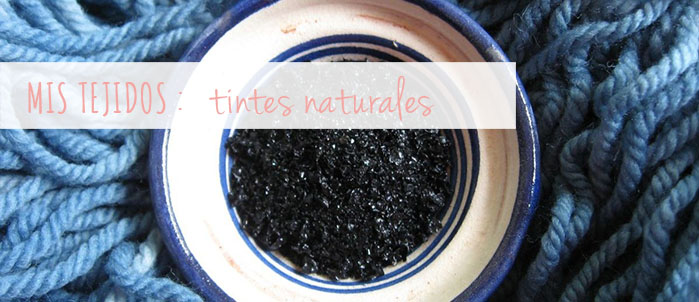
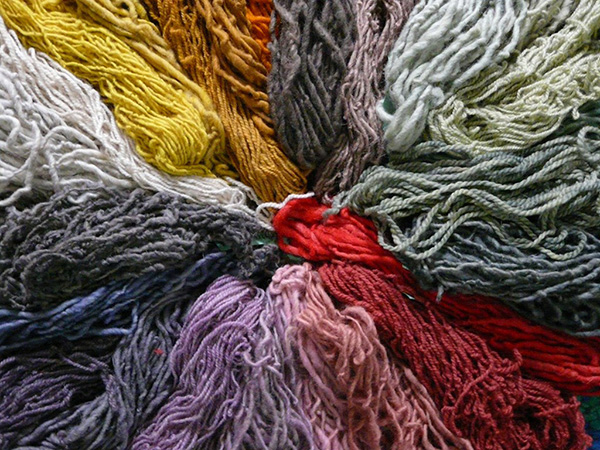


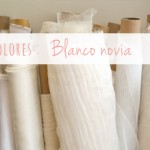
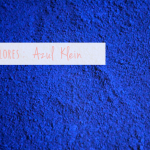
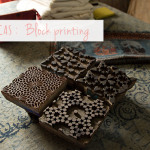




Interesantísimo!!
Maniática que es una, siempre SIEMPRE prefiero tejidos naturales (aunque los tintes que les den color no lo sean…). Camisas y camisetas, de algodón, jerseys de lana o cashmere, pañuelos de seda, y así…
¿Será que son más confortables? ¿O pura manía? Espero que lo primero, jeje
Bsz!!
Hola…excelente articulo, es justo lo que necesito..
me sirvio mucho para aprender un poco más en internet, sigue de la
misma forma :).
Besos
Gracias!
I do trust all the ideas you have offered in your post.
They’re very convincing and will certainly work.
Still, the posts are very brief for novices. May you please extend them a bit from next time?
Thanks for the post.
I will try, thanks!
Saved as a favorite, I love your web site!
Thank you!!!
Hi there! This is my first visit to your blog!
We are a team of volunteers and starting a new project in a community in the same niche.
Your blog provided us beneficial information to work on. You have done a wonderful job!
A textile community? Oh, pls, tell me more about it…